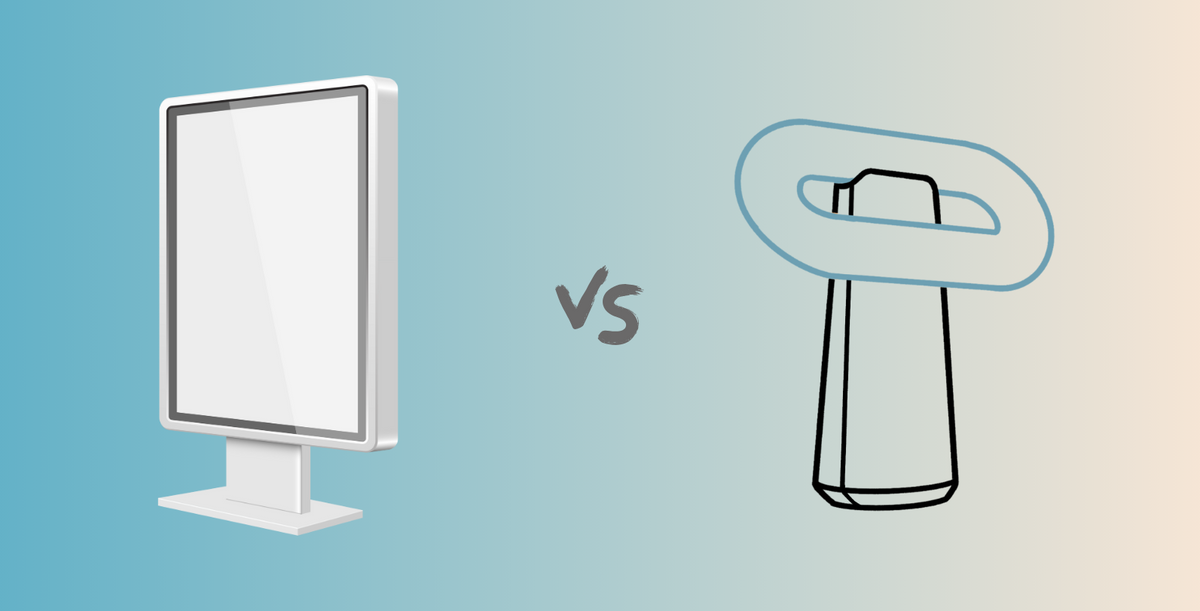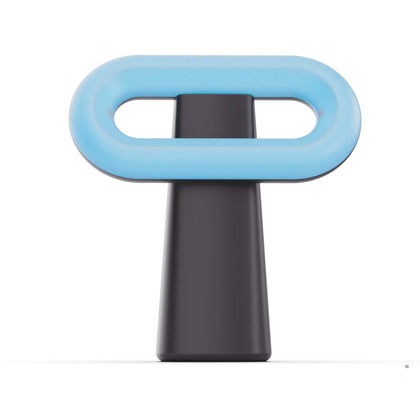
How is Loop different from a SAD lamp?
|
|
Time to read 5 min
You're doing the research, looking through different light therapy products, and you stumble across SAD lamps. They make some of the same claims we make. Emit bright light in the mornings as they should. And most importantly, are sold for $10 a pop on Amazon. So why wouldn’t you go for it?
But although Loop and SAD lamps might seem similar on the surface, as we’ll see, they’re two quite different tools for different jobs.


The nuts and bolts
SAD lamps are those white box lamps that you might have seen on Amazon. They emit bright light to mimic the intensity of outdoor light to help alleviate symptoms of Seasonal Affective Disorder (SAD).
SAD is a type of depression that recurs with the changing seasons, most commonly in fall and winter, marked by symptoms like persistent sadness, loss of interest, low energy, changes in appetite or sleep patterns, and feelings of hopelessness. Reduced sunlight exposure, disrupted circadian rhythms, and alterations in neurotransmitter levels are thought to contribute to its onset.
Loop, on the other hand, mimics the blue light spectrum that we get from outdoor light to treat circadian disruption.
Circadian disruption refers to disturbances in the body's internal biological clock, which regulates various physiological processes over roughly a 24-hour cycle. It occurs when external factors like irregular sleep patterns or exposure to artificial light at night disrupt the synchronisation of the circadian rhythm with earth’s day and night cycle. This disruption can lead to sleep problems and mood changes, in the short term and increased risk of certain diseases in the long term.
While SAD is commonly associated with feelings of depression and low mood, Circadian disruption can be described as a perpetual state of mild jetlag. When your rhythm is disrupted, you feel tired during the day, unable to focus and concentrate in the afternoons and have difficulty sleeping at night. 87% of office workers suffer from circadian disruption.
Can Loop be used to treat SAD?

The short answer is yes. But let’s get into that. A study by Meesters et al. revealed that both narrow-band blue light (like Loop) and bright white light (like a SAD lamp) were equally effective at alleviating symptoms of sub-SAD in patients.
Essentially, we didn’t design Loop to treat SAD. That just happened to be a flow-on effect. While the jury's still out on exactly what causes SAD, researchers think shifting circadian rhythms that throw off things like our melatonin and serotonin levels could be contributing factors. Loop realigns your circadian rhythm, which regulates hormones and neurotransmitters.
"both narrow-band blue light (like Loop) and bright white light (like a SAD lamp) were equally effective at alleviating symptoms of sub-SAD in patients."

Can SAD lamps be used to treat circadian disruption?
While using narrow-band blue light is effective for treating SAD, using bright white light like SAD lamps to treat circadian disruption is suboptimal.
A study conducted by the Sleep Research Society investigated the effects of light on the human circadian clock, specifically comparing the impact of increasing light duration versus increasing light intensity. Researchers found that prolonging the duration of light exposure had a greater effect on the circadian clock than simply increasing light intensity. This suggests that the timing and duration of light exposure may be more critical factors than brightness alone in regulating the human circadian rhythm.
If you’ve actually seen a SAD lamp, the first thing you’d notice is that it’s visibly much brighter than any light you might have seen before. And that’s because SAD lamps are intended to be used for 10-15 minutes every morning. In fact, according to their instructions, you shouldn’t look directly at it. It would actually be dangerous for you to keep it on throughout the day.
Unlike a SAD lamp, Loop emits short wavelengths of blue light throughout the day by syncing to your time zone. While the light emitted by Loop is less bright, it is more effective at realigning the circadian rhythm.
Ok, but how many lux does Loop have?

If you’ve been looking around, you’ll notice that many light therapy lamps boast emitting 10,000 lux. To explain what lux is, first I have to talk about the two different kinds of light. There’s visual light, and circadian light. Visual light is what we perceive with our eyes—sunlight, artificial lighting, and screens emit visual light that enables us to see and navigate our environment.
However, there is another type of light known as circadian light. Although it is not visible to the naked eye, our eyes are sensitive to certain wavelengths that influence our body's internal clock, or circadian rhythm. Circadian light affects the production of melatonin, a hormone that regulates sleep, and serotonin, a neurotransmitter that helps regulate mood.
Lux measures visual light, all of the light we see. As you might have already guessed, we didn’t really consider lux when making Loop. And that’s because we simply weren’t trying to make the brightest light on the market (increase lux levels).
The measurement that we cared about was how much circadian light it emitted. A good measurement of circadian light is m-EDI (the short form for melanopic Equivalent Daylight Index). That’s a mouthful, but m-EDI is a term that you should probably like to remember when thinking about lights in your home. Essentially, it measures how much light impacts our non-visual system, including our circadian rhythm.
Let’s take a look at that a bit further:
SAD lamp vs Osin Loop: Measuring the difference

As you can see, Loop meets expert lighting recommendations, delivering >250 EDI during the day and <10 EDI in the evening.
Specifically, Loop exceeds Brown et.al 2019's recommendation of ≥250 M-EDI during the day and ≤10 M-EDI in the evening in a real-world setting and meets the WELL Building recommendation of ≥275 EML in a real-world setting.
Are both lamps night safe?
One of the biggest differences between Loop and other SAD lamps or light therapy lamps, is that Loop’s spectrum changes throughout the day.
While during the day blue light during the day can help realign the circadian rhythm, even small amounts in the evening can suppress melatonin (the hormone that makes you feel sleepy) and interfere with the body's ability to prepare for sleep.
At night, Loop emits a warm amber glow in line with expert recommendations for evening circadian light (>10 mEDI).
SAD lamps, unfortunately, do not have this feature and so at night would be more harmful for sleep and the circadian rhythm.

So what lamp should I use?
In conclusion, the type of lamp you should buy really depends on the problem you’re trying to solve. If you’re looking for a light to combat Seasonal Affective Disorder, you might want to stick to a SAD lamp.
However, if you are looking for a light that is night-safe and can be used day in and day out to alleviate some of the symptoms of a disrupted circadian rhythm, we'd recommend trying a Loop. With Loop, we offer affordable subscription plans as well as the option to purchase outright. That way you can decide if it fits your lifestyle and return it for free if it's not for you.

